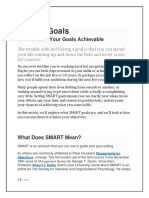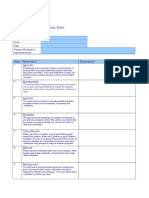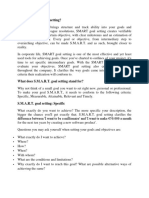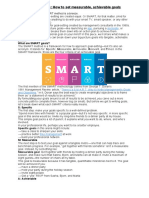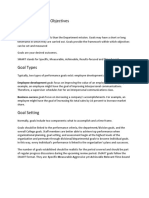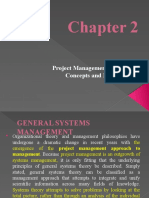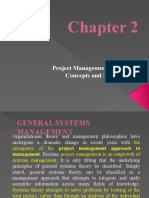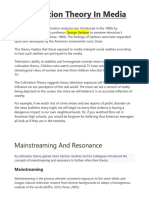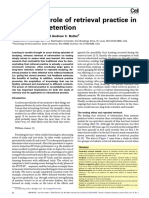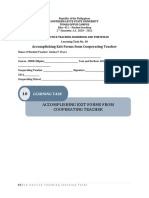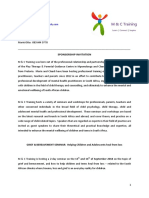0% found this document useful (0 votes)
17 views7 pagesSMART Guide
The document outlines the importance of setting SMART goals, which are Specific, Measurable, Achievable, Relevant, and Time-bound, to enhance personal and professional development. It details the benefits of SMART goal setting, such as improved direction, accountability, and productivity, and provides a structured approach for defining and writing SMART goals. An example is included to illustrate how to transform an initial goal into a SMART goal using the outlined criteria.
Uploaded by
bezaCopyright
© © All Rights Reserved
We take content rights seriously. If you suspect this is your content, claim it here.
Available Formats
Download as PDF, TXT or read online on Scribd
0% found this document useful (0 votes)
17 views7 pagesSMART Guide
The document outlines the importance of setting SMART goals, which are Specific, Measurable, Achievable, Relevant, and Time-bound, to enhance personal and professional development. It details the benefits of SMART goal setting, such as improved direction, accountability, and productivity, and provides a structured approach for defining and writing SMART goals. An example is included to illustrate how to transform an initial goal into a SMART goal using the outlined criteria.
Uploaded by
bezaCopyright
© © All Rights Reserved
We take content rights seriously. If you suspect this is your content, claim it here.
Available Formats
Download as PDF, TXT or read online on Scribd
/ 7














